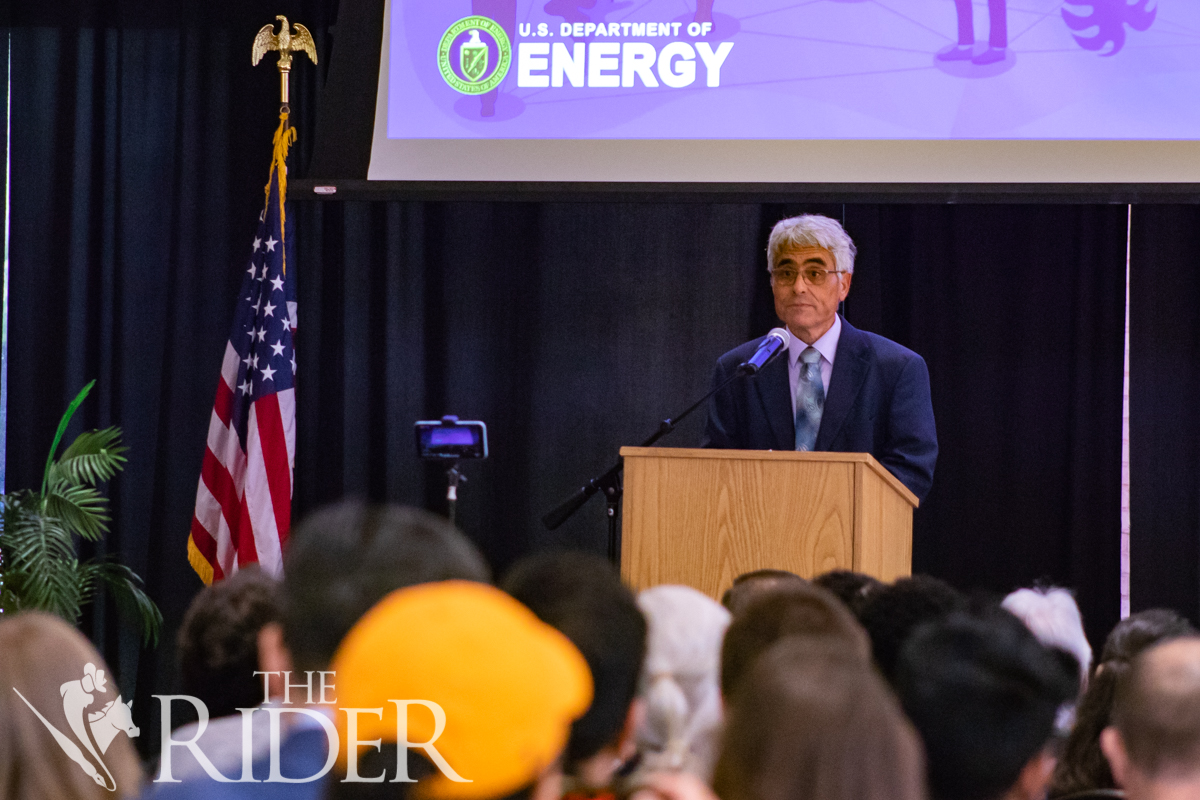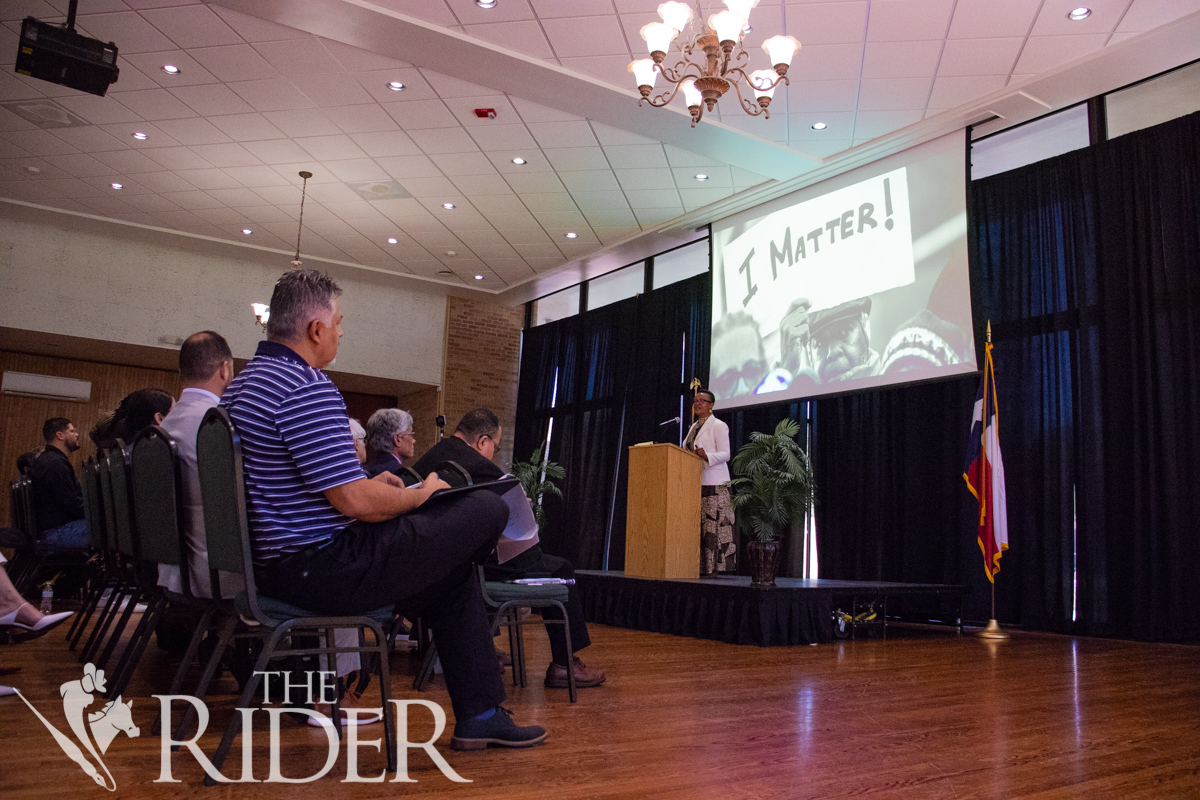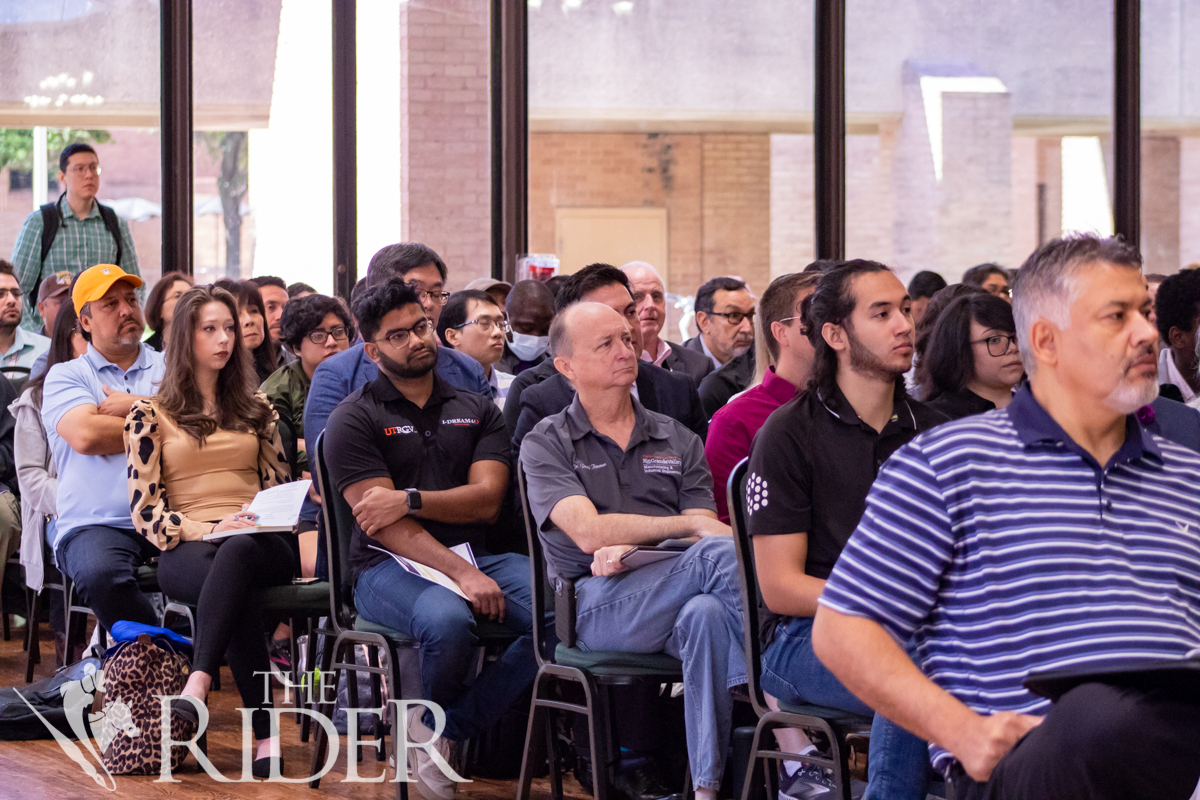To address clean energy issues, 40% of benefits of certain covered federal investments will be relocated toward disadvantaged communities, including the Rio Grande Valley, a Department of Energy official says.
Last Wednesday, Shalanda H. Baker, director of the Office of Economic Impact and Diversity in the U.S. Department of Energy, visited the Edinburg campus to speak about the Justice40 Initiative.
Justice40 is a $62-billion investment under the Bipartisan Infrastructure Law, which established the goal of relocating 40% of the overall benefits of certain covered federal investments toward disadvantaged communities.
Baker said that even though Texas leads the country in energy, oil and gas production, and in wind-powered electricity and solar-power potential, it also leads in oil and gas bills and toxic discharges into water.
She said issues faced in the Rio Grande Valley, including higher incidence of cancer and asthma, are directly linked to a high concentration of energy and other industrial infrastructure.
“In the Rio Grande Valley, we know that all of the … tremendous wealth that has been created by the energy industry has not made it to every household,” Baker said. “We also know that the White House has identified this community as a disadvantaged community, as a frontline community.”
The event, which had more than 100 attendees, was the first of its kind hosted by the DOE’s Road to Energy Justice initiative.
Justice40 covers climate change, clean energy and efficiency, clean transportation, affordable and sustainable housing, training and workforce development, remediation and reduction of legacy pollution, and critical clean water and waste infrastructure.
Its main priorities are:
–decreasing energy burden and environmental exposure in disadvantaged communities
–increasing access to and adoption of clean energy technology
–increasing access to low-cost capital and clean energy enterprise creation
–creating clean energy jobs, job pipeline and job trainings
–increasing energy resiliency and democracy
Walter Diaz, College of Liberal Arts dean, attended the event and said it is important to bring energy equity and justice to the Valley.
“The benefits of current paradigms more promptly disproportionately accrue to more privileged social sectors while the costs are disproportionately borne by the underserved and disadvantaged,” he said. “This is wrong and must change.”
George Atisa, an assistant professor in the Department of Public Affairs
and Security Studies, asked Baker what role politics play in the granting of money toward environmentally friendly solutions, to which she responded it creates an accountability loop to know where funds and resources are going.
“When we show up as a Department of Energy senior leadership, we’re actually connecting with local leaders and talking to them about their
plans, talking to them about the opportunities that we also will be offering through the department,” Baker said. “It’s one way that we can at least begin to sort of tap into the political nature of the work that
we’re doing.”
Atisa said during the event that the way issues are voted on will determine how resources are distributed.
“I think it goes beyond structure in politics,” Atisa said. “A lot of it may be not structural, but these grants are structured in a way that you have to describe your outcomes. … A lot of the time, [that does not] align with what’s on the ground.”









